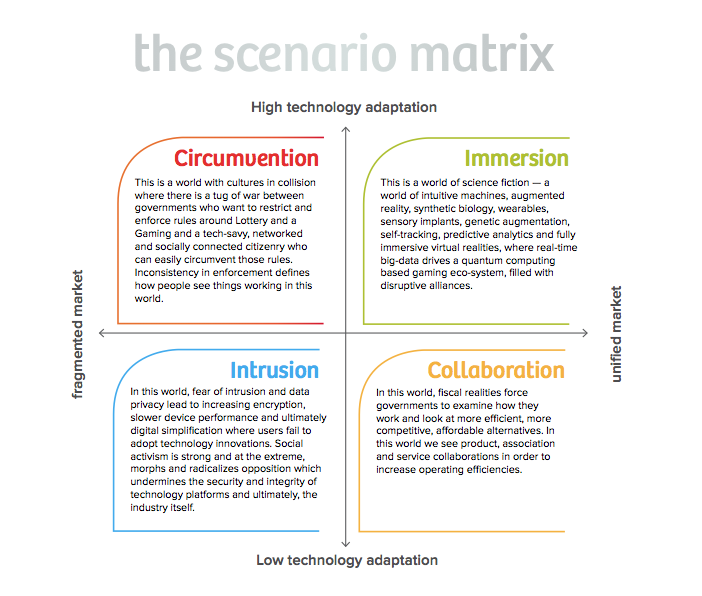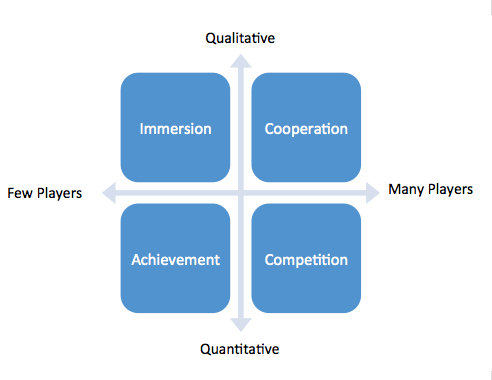Late last year I was involved in the creation of a series of scenarios for Atlantic Lottery Corporation in Canada looking at the future of gaming out to 2030. The scenarios were:
Circumvention:
This is a world with cultures in collision where there is a tug of war between governments who want to restrict and enforce rules around Lottery and Gaming and a tech-savvy, networked and socially connected citizenry who can easily circumvent those rules. Inconsistency in enforcement defines how people see things work in this world.
Immersion:
This is a world of science fiction – a world of intuitive machines, augmented reality, synthetic biology, wearables, sensory implants, genetic augmentation, self-tracking, predictive analytics and fully immersive virtual realities, where real time big data drives a quantum computing based gaming ecosystem, filled with disruptive alliances.
Intrusion:
In this world, fear of intrusion and data privacy lead to increasing encryption, slower device performance and ultimately digital simplification where users fail to adopt technology innovations. Social activism is strong and at the extremes, morphs into radicalized opposition that undermines the security and integrity of technology platforms and ultimately, the industry itself.
Collaboration:
In this world, fiscal realities force governments to examine how they work and look at alternatives to becoming more efficient, more competitive and affordable. In this world we see product, association and service collaborations in order to increase operating efficiencies.
Download the Scenario Book here



